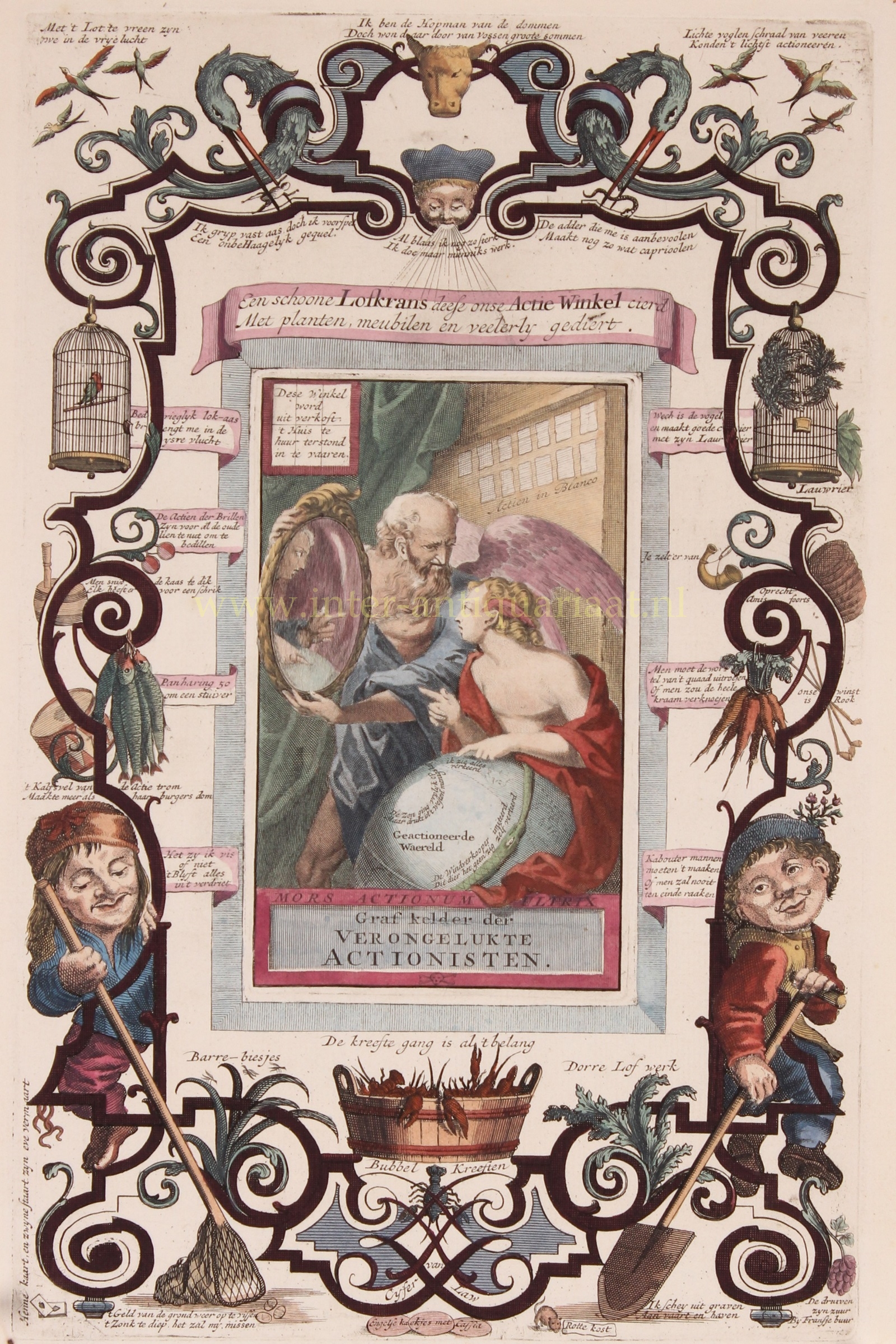“Graf kelder der Verongelukte Actionisten.” (Tomb of the ruined stock traders.) Etching and engringpublished in Amsterdam in or after 1720 as part of “Het Groote Tafereel der Dwaasheid” (the picture of stupidity). Coloured by a later hand. Size: 29,3 x 18,2 cm.
A lively stock trade in 1720 in Amsterdam turned out to be a wind trade. Investors widely fell for the empty promises that were presented to them. This eventually led to a major riot in the capital and became the subject of this satirical print.
The instigator of the crisis was the speculator John Law (1671-1729), the son of a wealthy Scottish goldsmith and banker. Law had built up a formidable reputation in London as a womanizer and gambler. He had had to flee the city and then traveled to Amsterdam and other European cities, where he studied banking and insurance.
In addition to a charming appearance, Law had a good head for numbers. In France he managed to gain the trust of the court. In 1717 he got permission to found the Mississippi Company, which issued shares in worthless companies overseas with the promise of high returns.
After a number of mergers with other companies, a batch of new shares was released in 1719, the price of which continued to rise. Following this rapid success, eager speculators in the Netherlands also set up companies with the most fantastic promises. Rich and poor alike speculated vigorously in the shares of these companies. Until mistrust in France and the Netherlands increased, panic set in and prices fell dizzyingly. Bankruptcies followed and many people became unemployed.
In Amsterdam, the wind trade led to a riot in 1720. Furious workers, who had become out of work because of the bankruptcies, went to Dam square and knocked off the stately wigs and hats of the stock traders. Then they stormed the meeting place of the traders, the coffee house Quincampoix in the Kalverstraat, so named after the Rue Quincampoix in Paris, the center of the speculation trade.
This engraving of the “tomb of the ruined stock traders” mocks stock trading and those who are involved. In the center we see a trader in his shop (selling blank stocks). The shop is sold out, its says, the property is immediately put up for rent. The “wind seller” is held up a mirror by an earth angel. The trader points to the globe from the “actioned world” saying “I am seeing everything wrong”. A snake wrapped around the world biting itself in the tail: “the seller of wind imitates this animal that consumes itself”.
John Law narrowly escaped in the riot in Amsterdam in 1720. A few years later he would die in Venice, completely penniless,
Price: Euro 350,-


